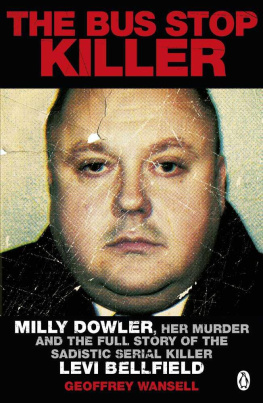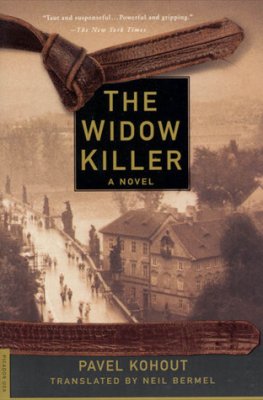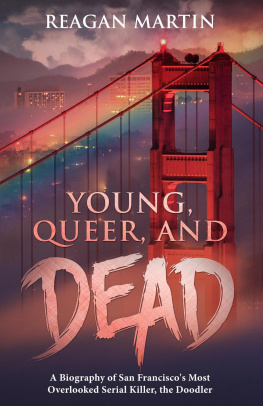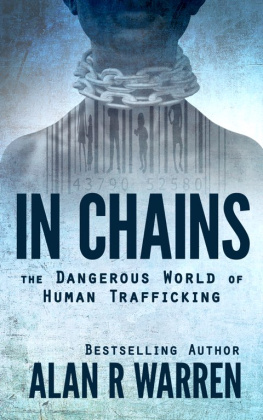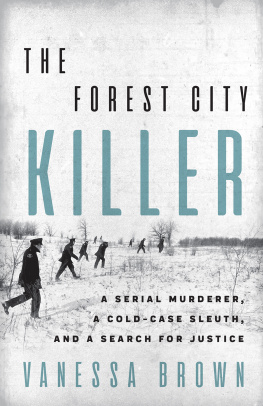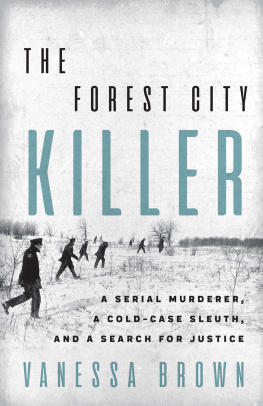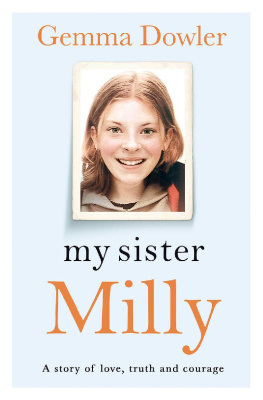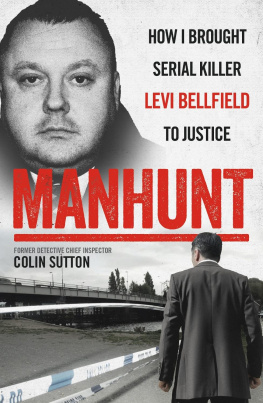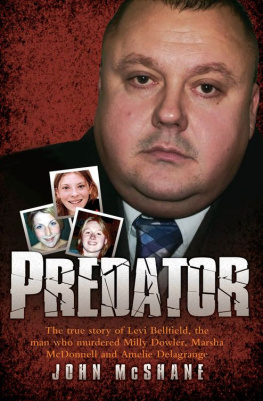
The Bus Stop Killer
Brought to you by KeVkRaY
GEOFFREY WANSELL

PENGUIN BOOKS
Contents
For Tom and Veronica, Leaf, Michael and Andrew who believed in me
Illustrations
Prologue: Deaths Shadow
The soul of a murderer is blind.
Albert Camus, The Outsider
The scene is a warm Thursday evening in August 2004, and dusk is falling gently across the shops and bars of Twickenhams London Road, just half a mile south of the famous rugby stadium. The bright lights from the pubs and clubs on both sides of the busy street are gradually beginning to illuminate the pavements outside the Waitrose supermarket and the railway station that lie at the heart of this comfortable, leafy west London suburb.
On the patio outside Crystalz wine bar, just beside the police station, sits an attractive twenty-two-year-old French girl, just 5 feet 4 inches in height, 9 stone in weight, and with collar-length blonde hair, who is drinking a glass of white wine with three of her girlfriends. Her name is Amlie Delagrange, and shes wearing white linen trousers, a low-cut red vest and a white cardigan. There is a broad smile on Amlies face, for shes enjoying being back in London after some time in France and working in a caf and patisserie in the eminently respectable middle-class suburb of nearby Richmond. The group of girls are laughing and telling each other how this part of west London is a very safe place to live.
What they do not know, however, is that it is to prove exactly the opposite for this vivacious, charming young French girl for within an hour she will be killed by a complete stranger.
Amlie was born on the outskirts of Paris in February 1982. Her parents, Jean-Franois and Dominique, named her after her grandmother. Amlies father was an architect who had built the family a house in the Picardy countryside in northern France when she was a girl, where she had been brought her up alongside her elder sister, Virginie. Balanced, enthusiastic and eminently sensible, she had decided to come back to England to improve her English still further and she had even recently found a new boyfriend, Olivier, who worked with her in the patisserie.
Just after 9.30, with the light finally fading, and a chill starting to make the patio feel a little less welcoming, Amlie Delagrange starts to leave. She throws her handbag over her shoulder, collects the Next carrier bag that shes brought with her, containing a new top she had bought that day, and gets up. Shes had three, perhaps four, glasses of white wine, she cant quite remember, and is just a little unsteady on her feet, but that doesnt worry her for a moment. With a grin she tells one of her French girlfriends, Floriane, that shes a little bit drunk, and asks another of the group, Vanessa, if she would mind walking her across the road to the bus stop to wait for the R267 red double-decker that will take her the short distance home to the room that shes been renting for the past few months in a street just north of Twickenham Green. Her bus duly arrives at 9.39, and from across the street her friends watch her get on and wave goodbye. It is the last time that they will see her alive.
Amlies good mood, helped a little by the white wine, means that she overshoots the right bus stop for her home perhaps she dozed off for a moment or two but, undismayed, she gets to her feet to speak to the driver, to check if she has indeed missed it. He tells her she has, but then explains that if she waits for a moment shell be at the end of the buss route and she can walk the half mile or so back towards Twickenham Green and home.
Hardly any time has passed barely five minutes since she waved goodbye to her friends outside Crystalz when the double-deckers CCTV security cameras show her getting off outside the Fulwell Bus Garage on Hampton Road. For a moment, she isnt quite sure which way to go and stops to look at the map on the bus stop to get her bearings. That only takes a moment, and within seconds Amlie starts to walk towards the Green.
The walk takes Amlie just a quarter of an hour, and lots of people see the young French girl making her way northwards. She passes the Prince of Wales pub, where one drinker sitting alone at the bar notices her looking a little unsteady on her feet, while a lady parking outside her home sees her checking her route at another bus stop to make sure shes still going the right way. She is even captured on the in-car video system of a police car that drives past her.
Finally, just after 10 oclock on that warm August evening, Amlie crosses Hampton Road and walks on to the south-western tip of the triangular Twickenham Green, which boasts a handsome white cricket pavilion and a cricket pitch, and slips into the dark shadows of the trees that shelter the Green on its edge. There are no cricketers at this time of night, no sounds of white-flannelled players congratulating one another after an evening game as they prepare to walk across to the pub to celebrate or drown sorrows. There is just a cloying darkness the street lights dont reach far on to the Green itself. Unconcerned, Amlie walks quickly past the rope that protects the cricket square towards the lights of the shops and wine bars on the far side and home.
It could hardly be a more English scene: a cricket pavilion surrounded by leafy suburban roads and comfortable middle-class villas on the western outskirts of London. Twickenham doesnt boast the alleyways and runnels of Dickenss east London, haunt of Jack the Ripper; nor the red lights of the backstreet terraces of Leeds, where the Rippers Yorkshire namesake took his victims. This is affluent, unthreatening, comfortable suburbia. That makes not a jot of difference. Amlie could just as well have been in Whitechapel on those terrible nights in the summer and autumn of 1888 when Jack eviscerated his five victims, because just moments after she starts to walk around the cricket pitch and across the Green a family in a nearby street hear a plaintive scream in the stillness of that evening a ten-second shout rather than a cry for help, they remember later.
Amlie was not alone on Twickenham Green that evening. Men were walking their dogs, stubbing out their cigarettes behind the white cricket sightscreens, hurrying towards the Indian restaurant and the wine bar on the north side to join friends, but no one stopped when that scream went up, no one turned a hair, or called a policeman. No one spotted a threatening man in the shadows, no one saw a hooded figure bent on violence, or a tramp begging for money for food, drink, or drugs. No one saw anything. It was simply an ordinary summers evening in west London and yet into that utterly commonplace setting someone injected a brutal murder.
Amlie Delagrange never reached the far side of the Green and home. She died, alone, in the shadow of the cricket pavilion, murdered for no apparent reason.
Shortly after 10.15, with the shadows now deep and dark, student Tristram Beasley-Suffolk was walking across the Green, taking a breath of air from his studies, when he saw what he thought was some white plastic sheeting lying on the ground on the edge of the cricket square. But as he got closer he realized, to his horror, it was a person.
Amlie was face-down on the grass with her right arm underneath her and her legs bent up towards her chest in what was almost the foetal position. She was breathing, but only just: she had been hit viciously on the head with a heavy blunt instrument not once but several times. Tristram did what he could to make her comfortable and ran across the Green to ask the local wine bar to call an ambulance.
Next page
